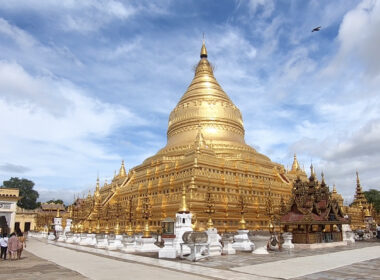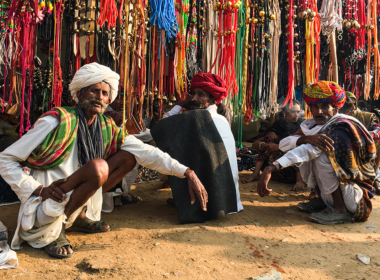Capturing diverse landscapes, cultures, and experiences, reflecting societal transitions, economic disparities, and infrastructural challenges, while showcasing the nation’s unity in diversity and evolving identity
Day 4; We took a scenic drive through Amboli Ghat to reach Kolhapur. This route is known for its lush forests, stunning waterfalls, and captivating natural landscapes. It’s a fantastic tourist attraction for anyone who enjoys a beautiful drive.
Day 5; We drove to Trimbakeshwar via Navi Mumbai, enjoying the highway and western ghats, we bought some famous maganlal chikkis from Lonavala and had a special Maharashtrian thalipith in fog city Igatpuri, enjoyed the misty weather, one shouldn’t miss wide landscape and lots of waterfalls along the way to temple.
.
Day 6; Just 11 Km offbeat from Lonavala’s scenic hills, we reached Bhaja Caves, we spent some time chilling out in the water, it was about to close we took a quick trek to cave and had a brief look.
The cave entrance is really impressive, at night, we enjoyed Krishana Janmashtami’s keerthana in the village temple, It was a lovely cultural experience.
Day 7; We drove to Trimbakeshwar via Navi Mumbai, enjoying the highway and western ghats, we bought some famous maganlal chikkis from Lonavala and had a special Maharashtrian thalipith in fog city Igatpuri, enjoyed the misty weather, one shouldn’t miss wide landscape and lots of waterfalls along the way to temple.
Day 8; We are in KalaRam temple in Panchavati, Nashik, this is built in black stones and showcases the excellence of ancient architecture, It is believed that Rama, Sita, Laxmana lived here during their Vanavasa, near by, there is RamKund by the Godavari river where they used to take dips and now it is worship as Ganga of Nashik.
.
Day 9; You can’t miss the Misal Pav if you are in Nashik, we tried “Induction Misal Pav,” at Hot Pot Misal Cafe and it was amazing, served in a big kadai with “tambda” and “pandhra” rassa, it’s a must try, especially the”pandhra” rassa it was so satisfying.
Day 10; We are in KalaRam temple in Panchavati, Nashik, this is built in black stones and showcases the excellence of ancient architecture, It is believed that Rama, Sita, Laxmana lived here during their Vanavasa, near by, there is RamKund by the Godavari river where they used to take dips and now it is worship as Ganga of Nashik.
Day 11; We were in Pandav Leni caves, it’s 8km away from Nasik city, these caves represents roots of early Buddhist school traditions and it’s surrounded by lush green, offers stunning view of Nashik city.
Day 12; Experiencing the wine culture at Sula Vineyards,It’s beautifully surrounded by western ghat hills and provide a stunning backdrop to the vineyard, as you step in you start enjoying peaceful atmosphere and fresh air, they’ve excelled in implementing sustainable practices like water recycling, solar power usage, organic farming using the compost produced by grape pulps.
.
Day 13; Grishneshwar Jyotirlinga, we were fortunate to have Lord Shiva’s darshana on the Bhaum Prodosh Vrat at Grishneshwar, which marks our visit to the second Jyotirlinga. It’s just 900 meters away from Ellora caves.
Day 14; Exploring the magnificent Ellora Caves, a UNESCO World Heritage site, we hiried a govt official guide Siddharth Sir to delve into the fascinating stories behind this historical wonder, the site has total 34 caves, 1 to 12 are Buddhist, 13 to 29 are Hindu and 30 to 34 are Jain monuments, our personal favourites are 10, 16, 29 and 34. and the Kailash Temple stands out as main attraction of this place in cave no. 16.
Day 15; Exploring marvel architecture of Kailash Temple, this temple is carved out of a single massive rock in the 8th century by Rashtrakutas dynasty as a tribute to Lord Shiva and fascinating thing is that it was sculpted from the top to bottom, temple’s carvings and sculptures are not only religious but also known for artistic marvels, they depict scenes from Ramayana and gives glimpse of ancient Indian art, culture, and religion.
.
Day 16; Ajanta Caves were largely forgotten and hidden in the forest until their rediscovery by British officer John Smith in 1819, these caves are excavated out of a vertical cliff above the left bank of the river Waghora, renowned for their exquisite mural paintings and splendid sculptures, there are total 30 caves including unfinished ones and all have Buddhist monuments with Stupa(Buddhist shrine),Chaityas(prayer halls)and Viharas (monastic living quarters), these all depicts stories of Buddha’s life and all caves are well connected with rock-cut staircases. Note: Private vehicles are not permitted near the cave site, so visitors must use a shuttle bus to reach the site, which is located 4km away from the parking area
.
Day 17; After soaking ourselves in the Indian history, we headed to Nagpur via Samruddhi Mahamarg, this infrastructure is amazingly done to connect Mumbai and Nagpur, it drastically reduces the travel time, but only thing is that there is no good facility of washrooms and restaurants and the petrol pumps are in far distance, so be prepared for a long drive, make sure you’ve something to eat and keep an eye on petrol pumps for washrooms to have convenient breaks.
Day18; Explored Ramtek village, it’s 30km away from Nagpur, takes about 90 minutes to reach, famous for historic Ram temple, which is situated at the base of the Ramtek fort on top of the hill, offers a stunning panoramic view of the village below, what’s unique about this place is the presence of dedicated shrines for Lord Ram, Laxman, and Sita, usually we see all three deities in a single shrine, it’s a renowned religious site for locals, attracts many devotees from far places during the Ram Navami festival
What not to miss when you’re in Ramtek
📍Shri Ram Temple & Fort
📍Ambala Lake
📍Khindsi Lake
📍Kapoor Baoli
📍Adventure Camps
.
States
✦ Goa
✦ Maharashtra
✦ Chattisgarh
Next Stories; Chattisgarh





